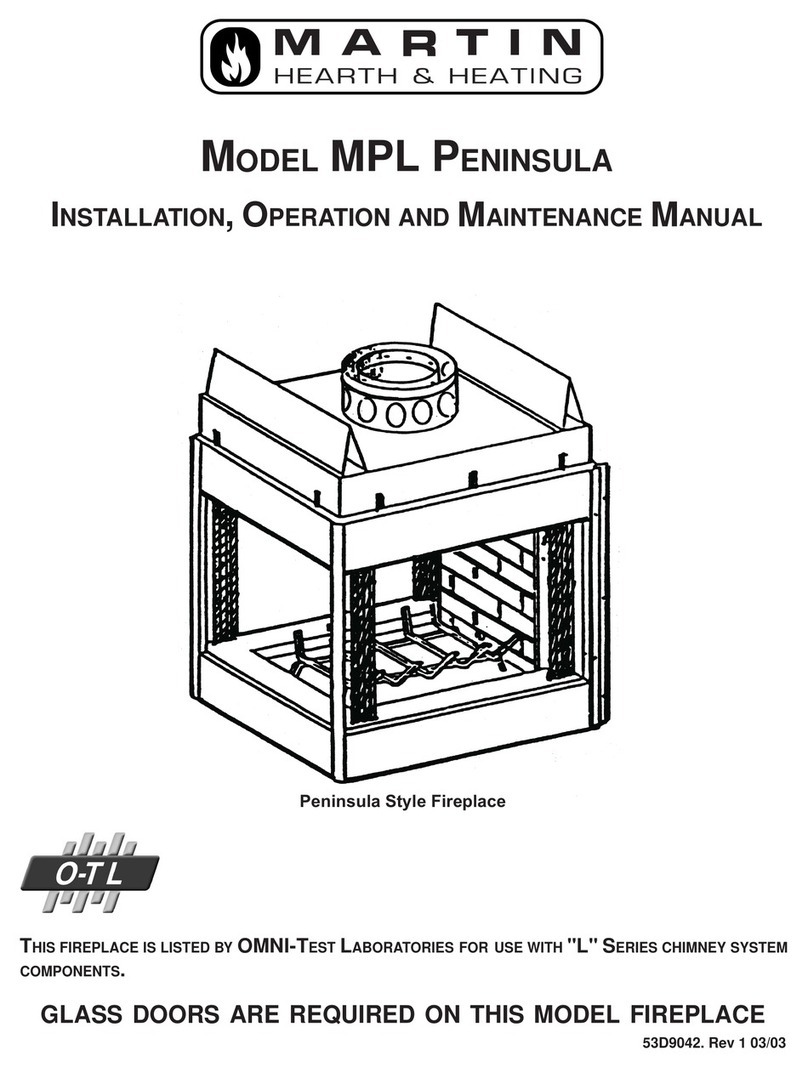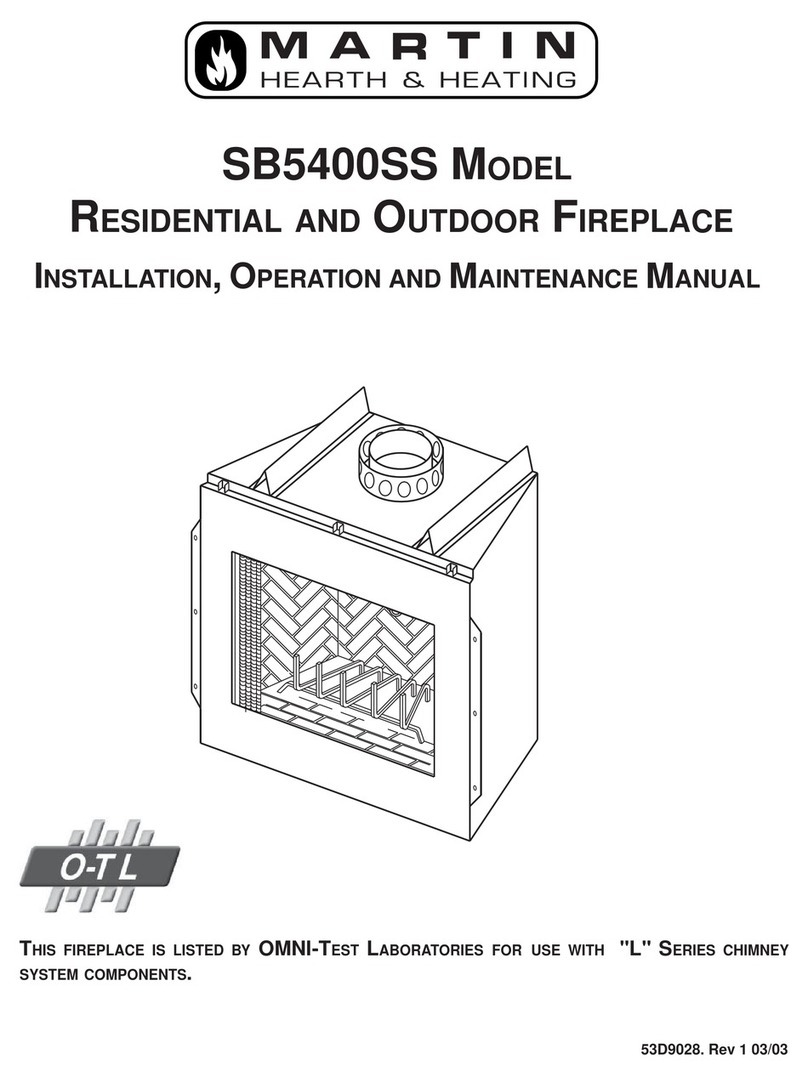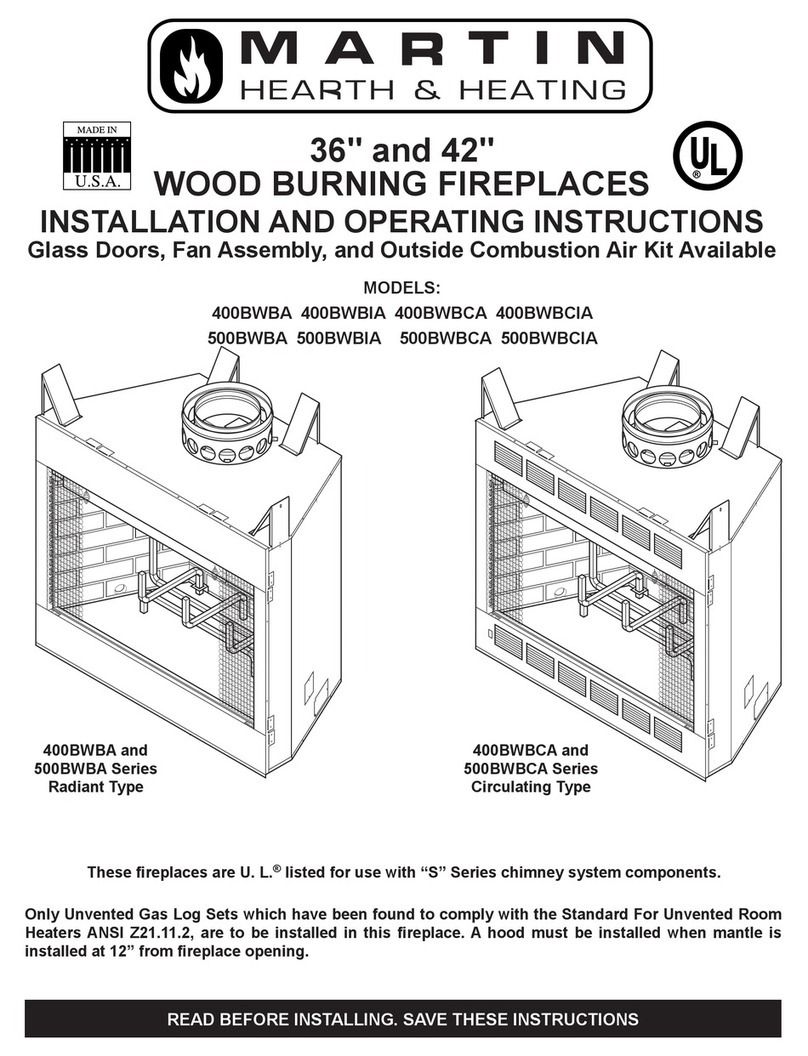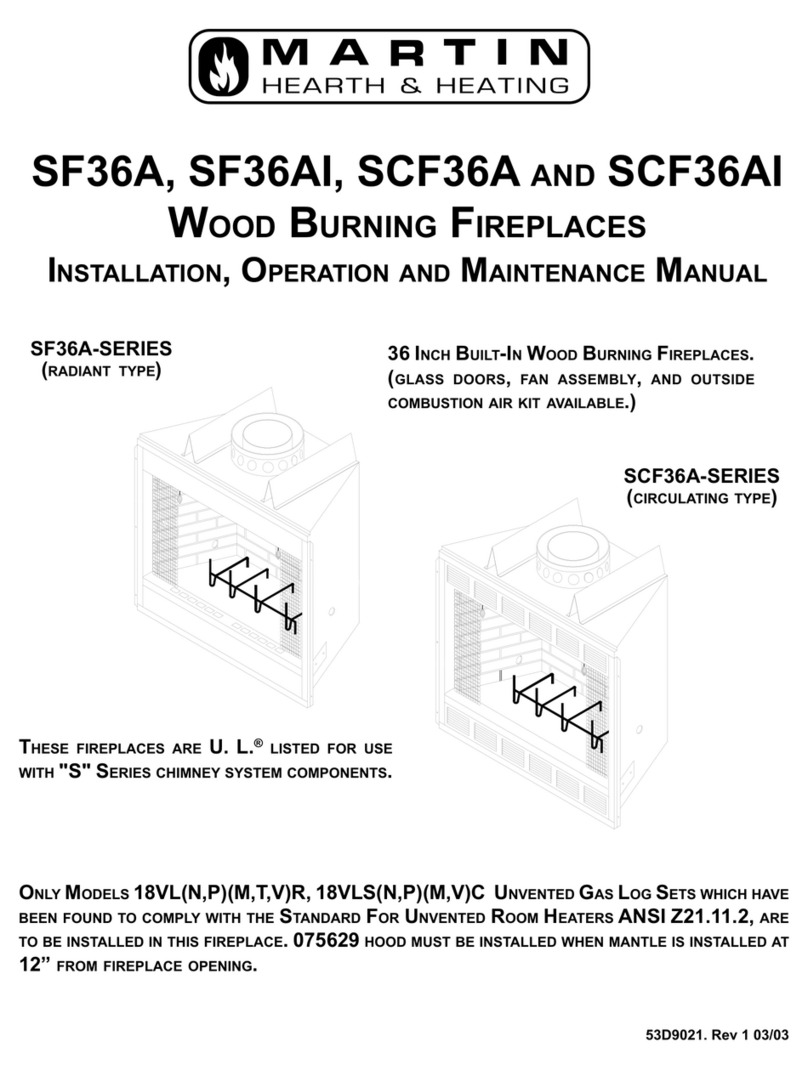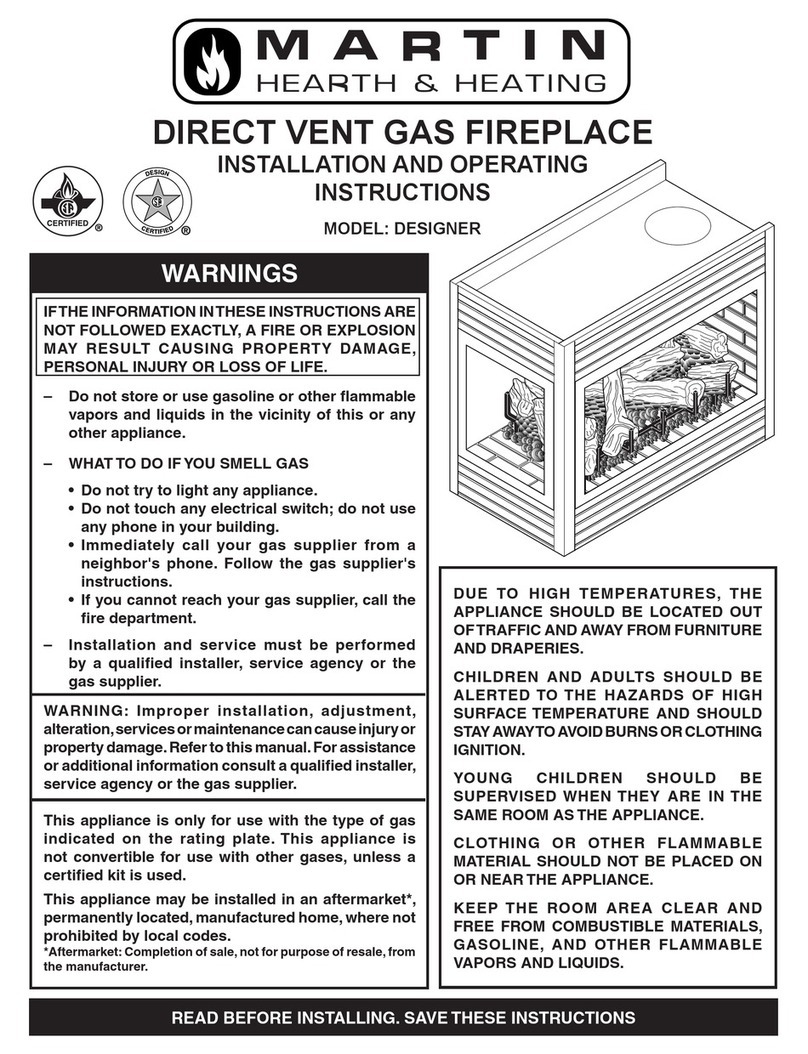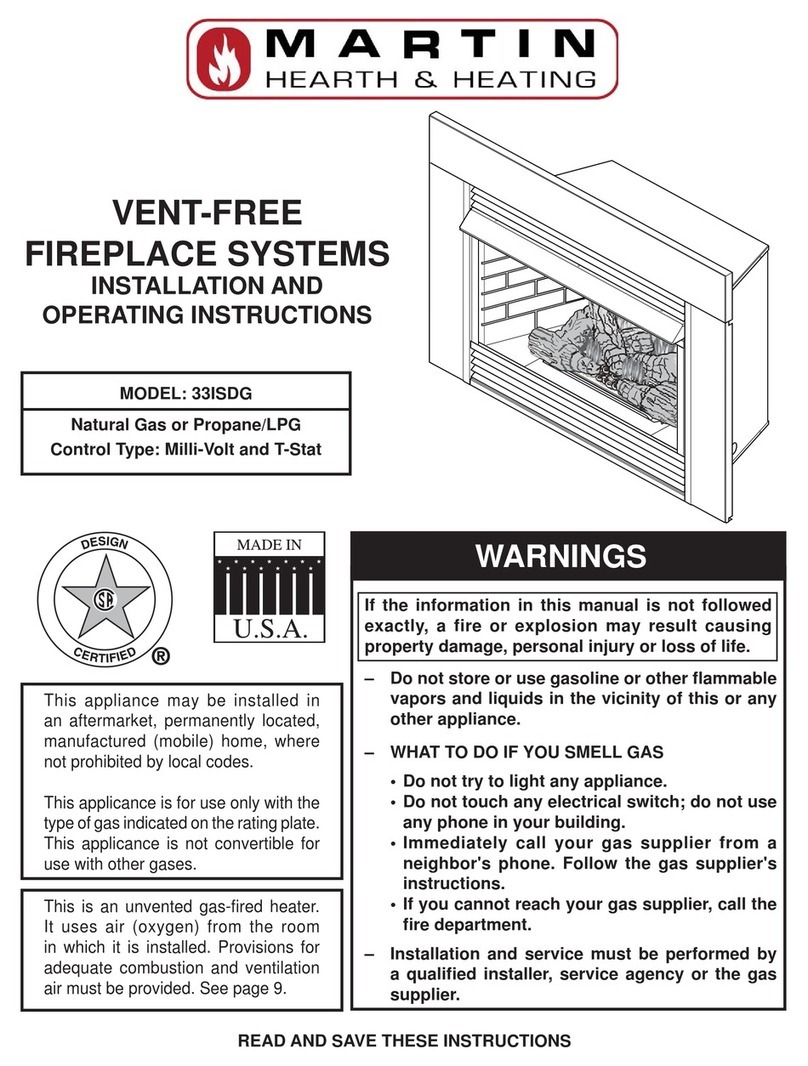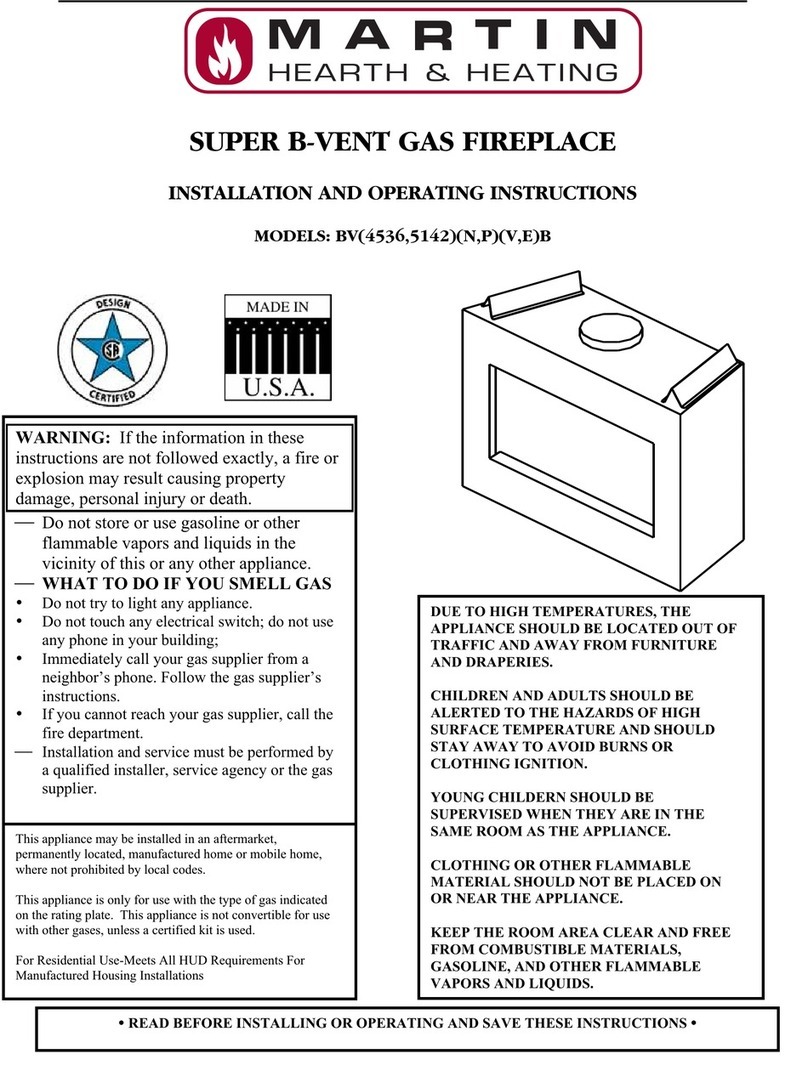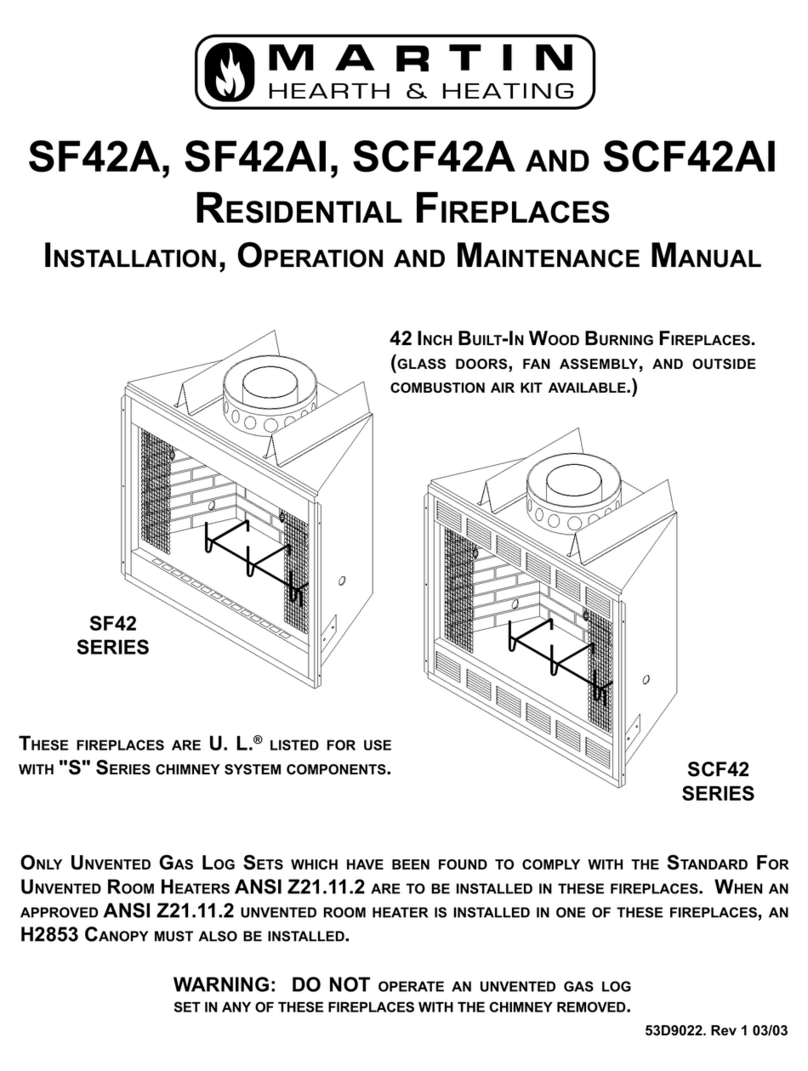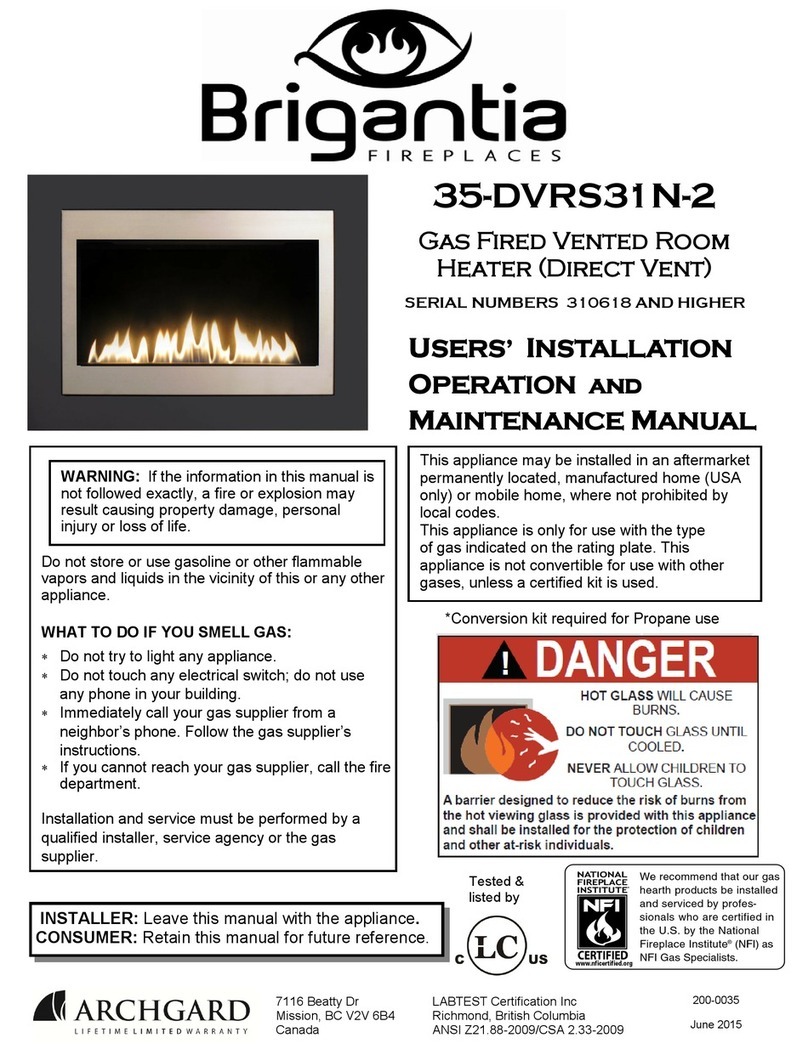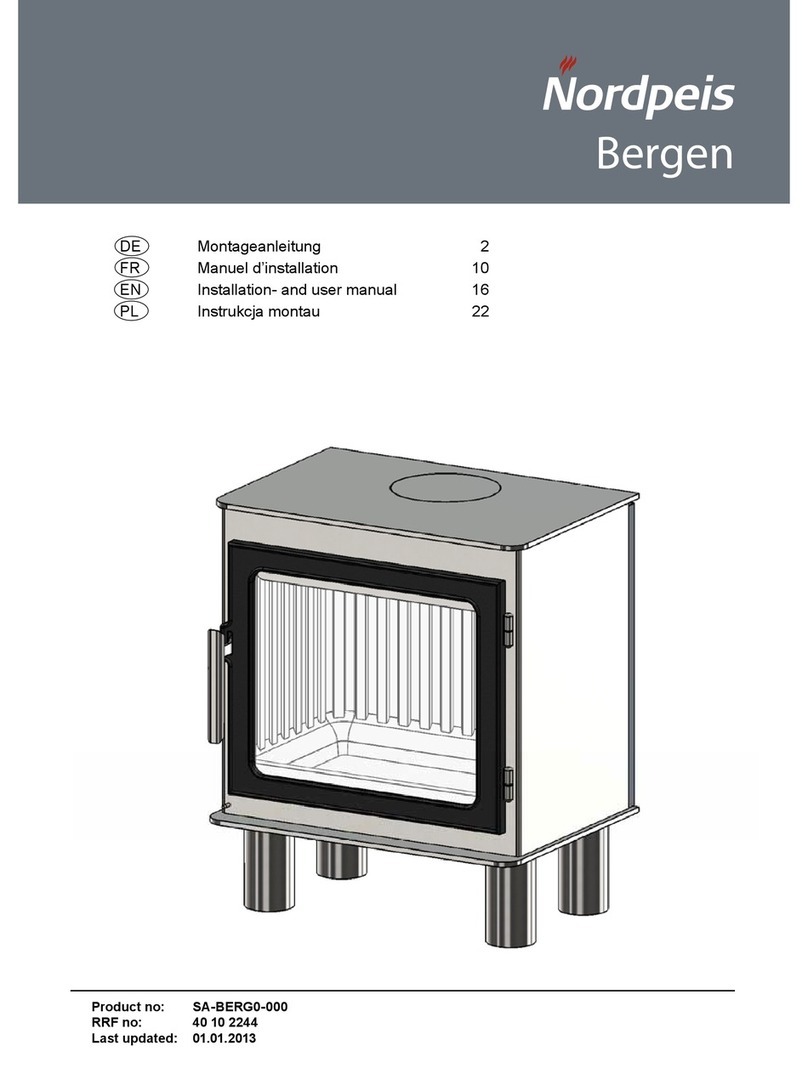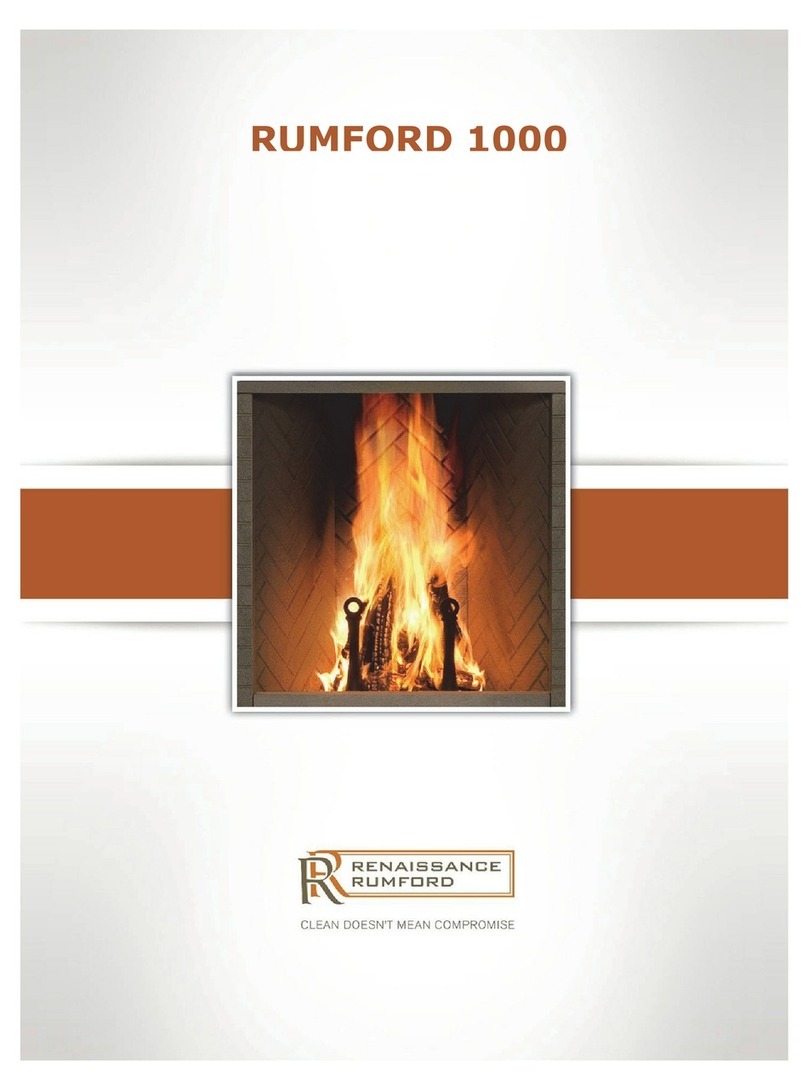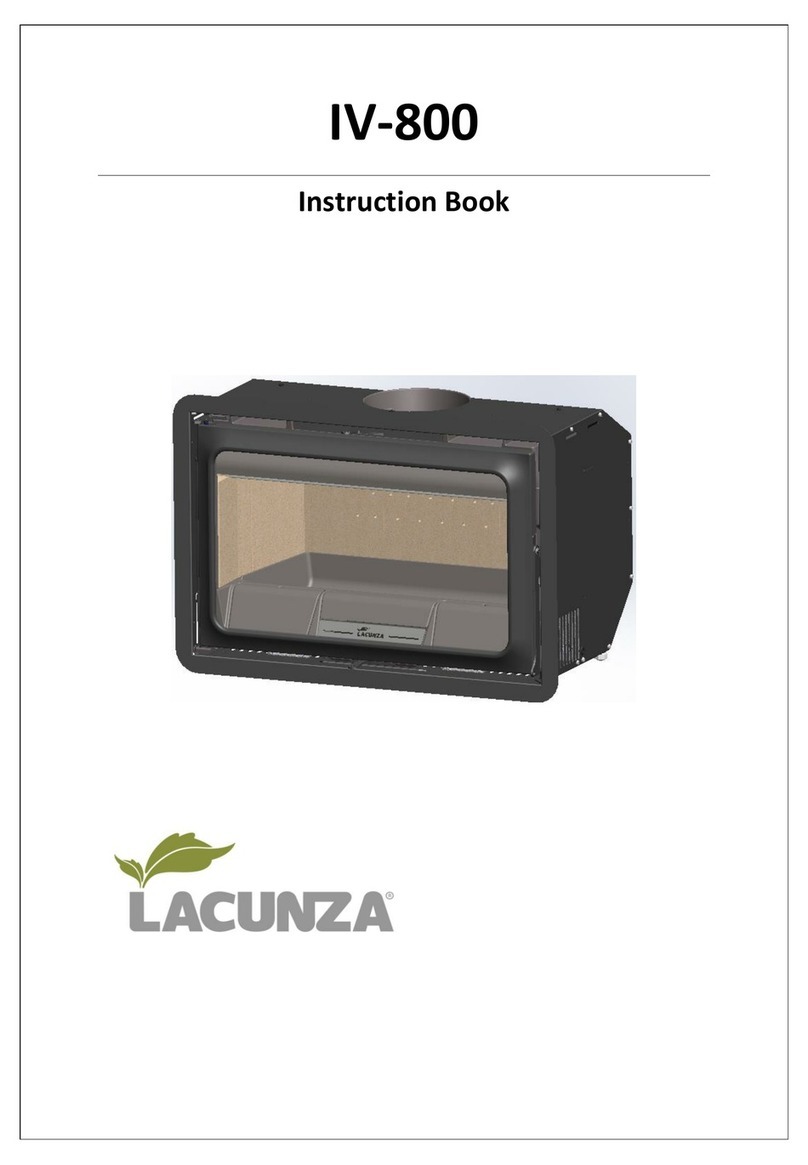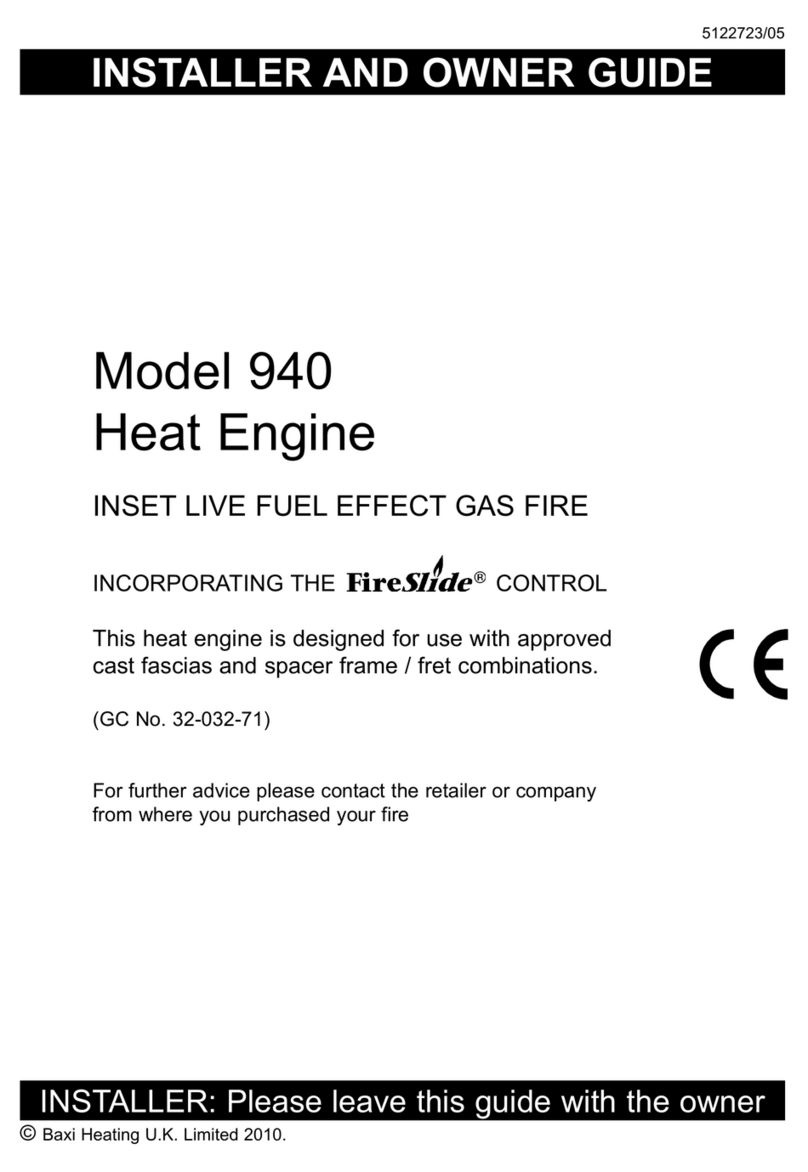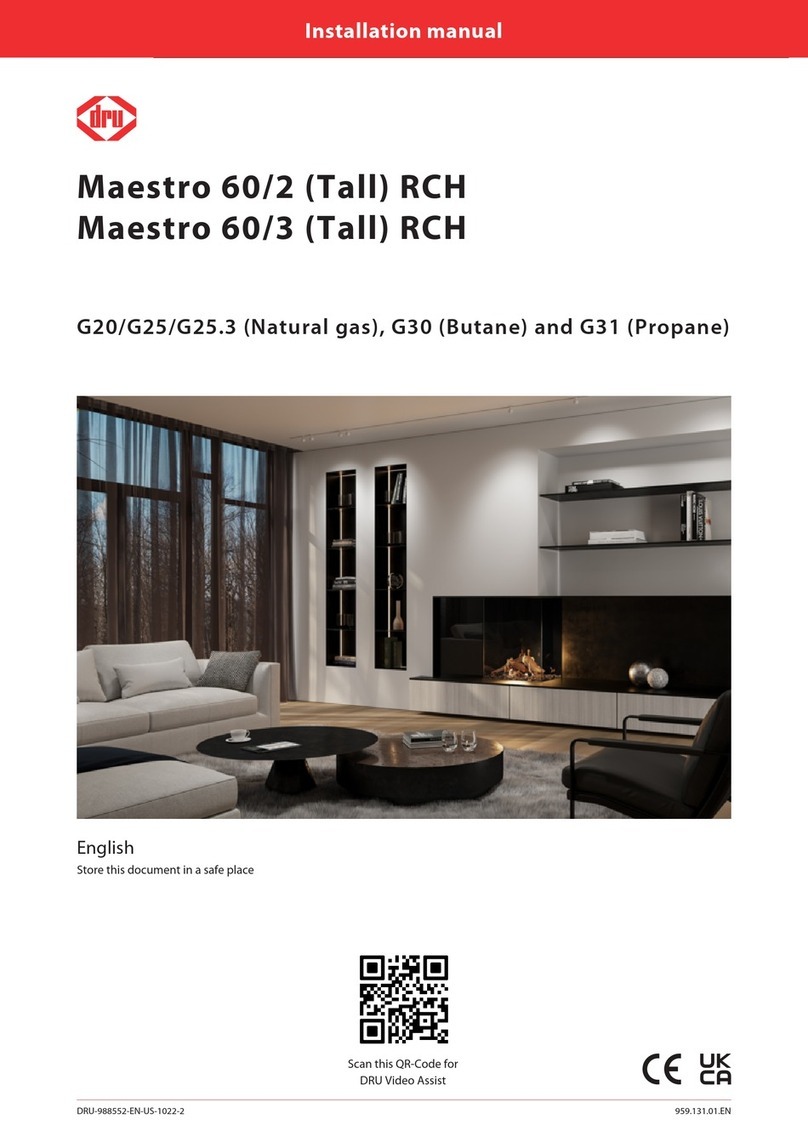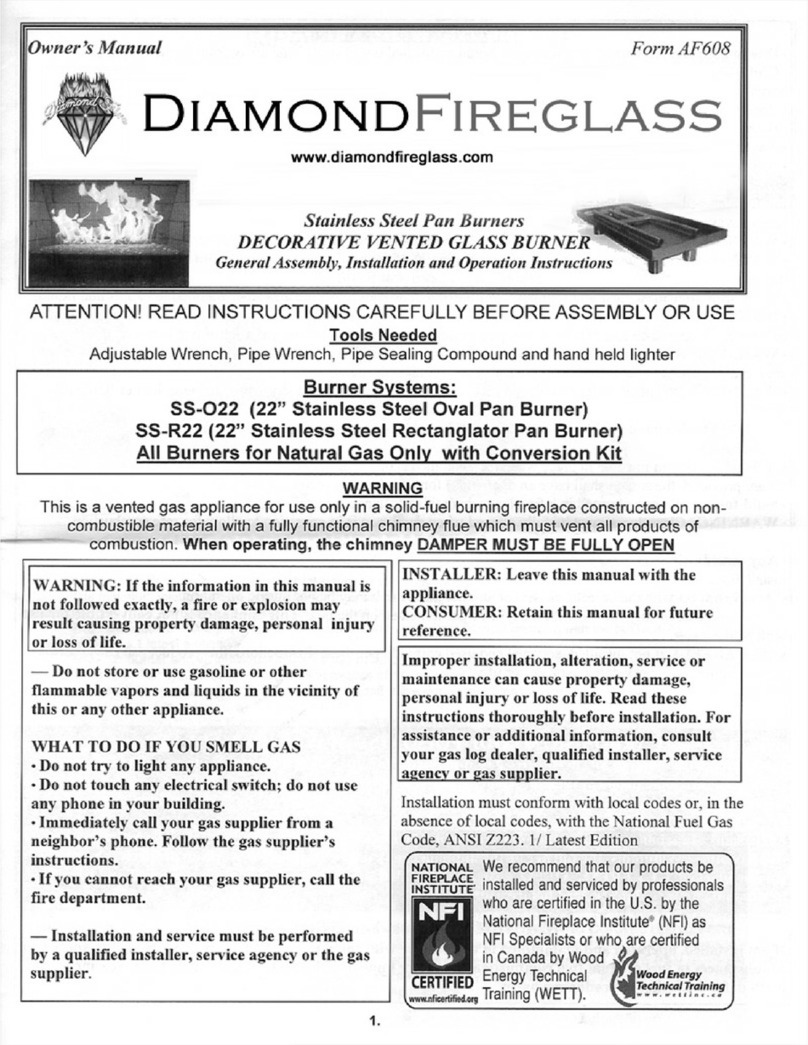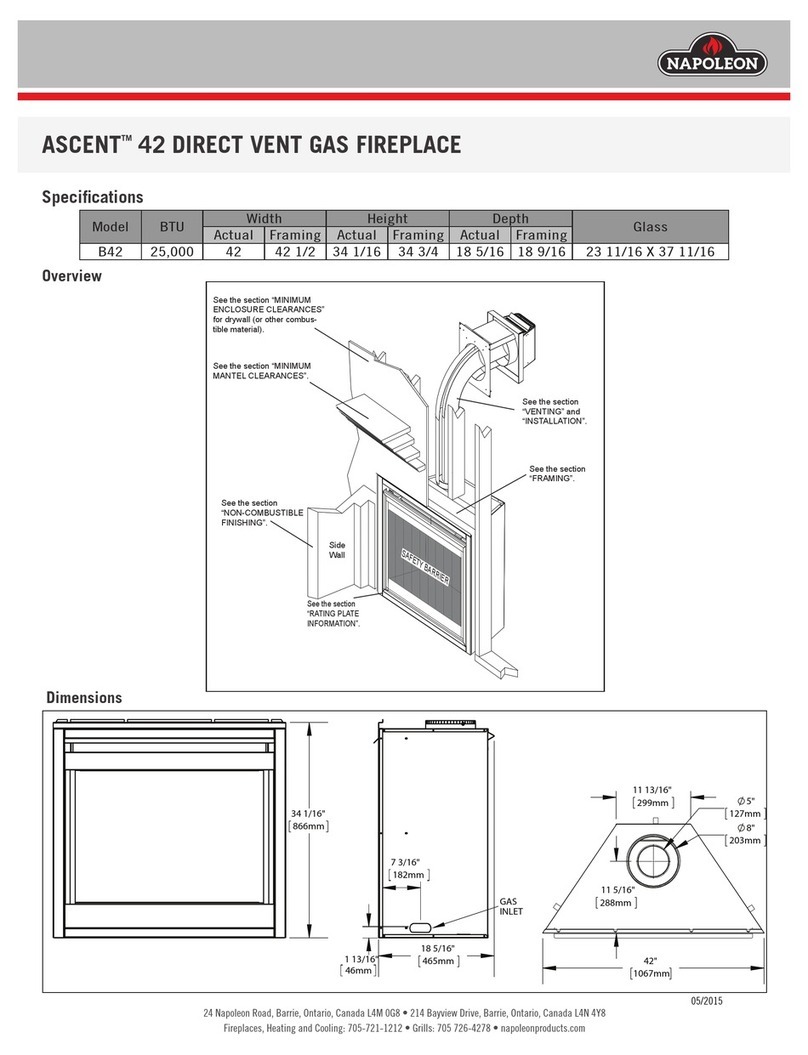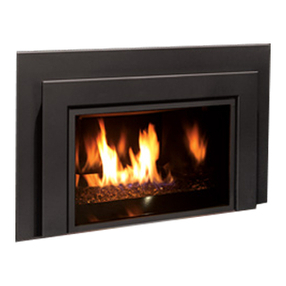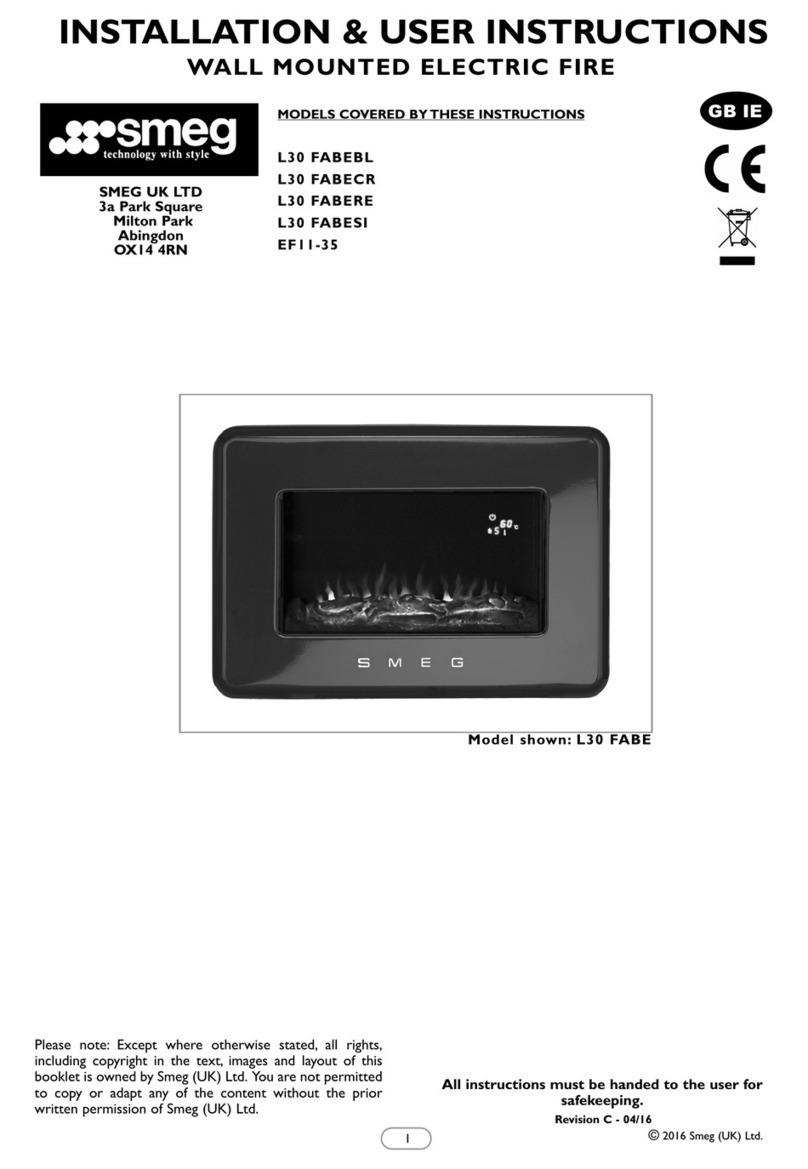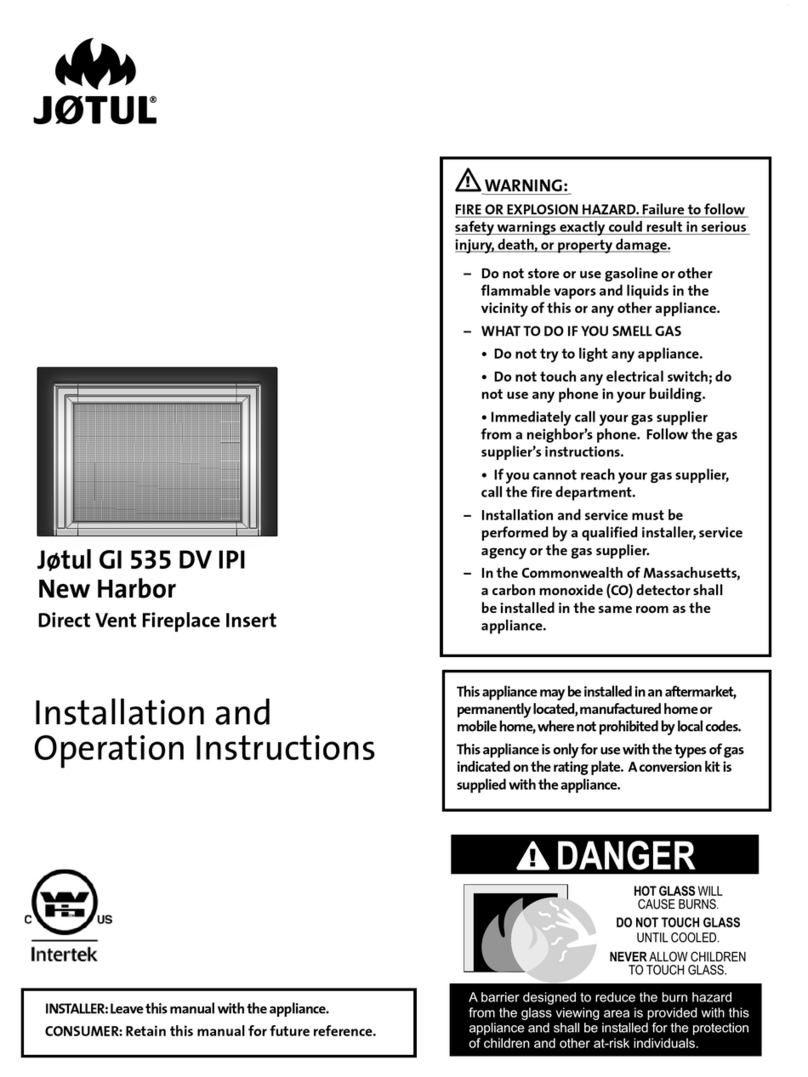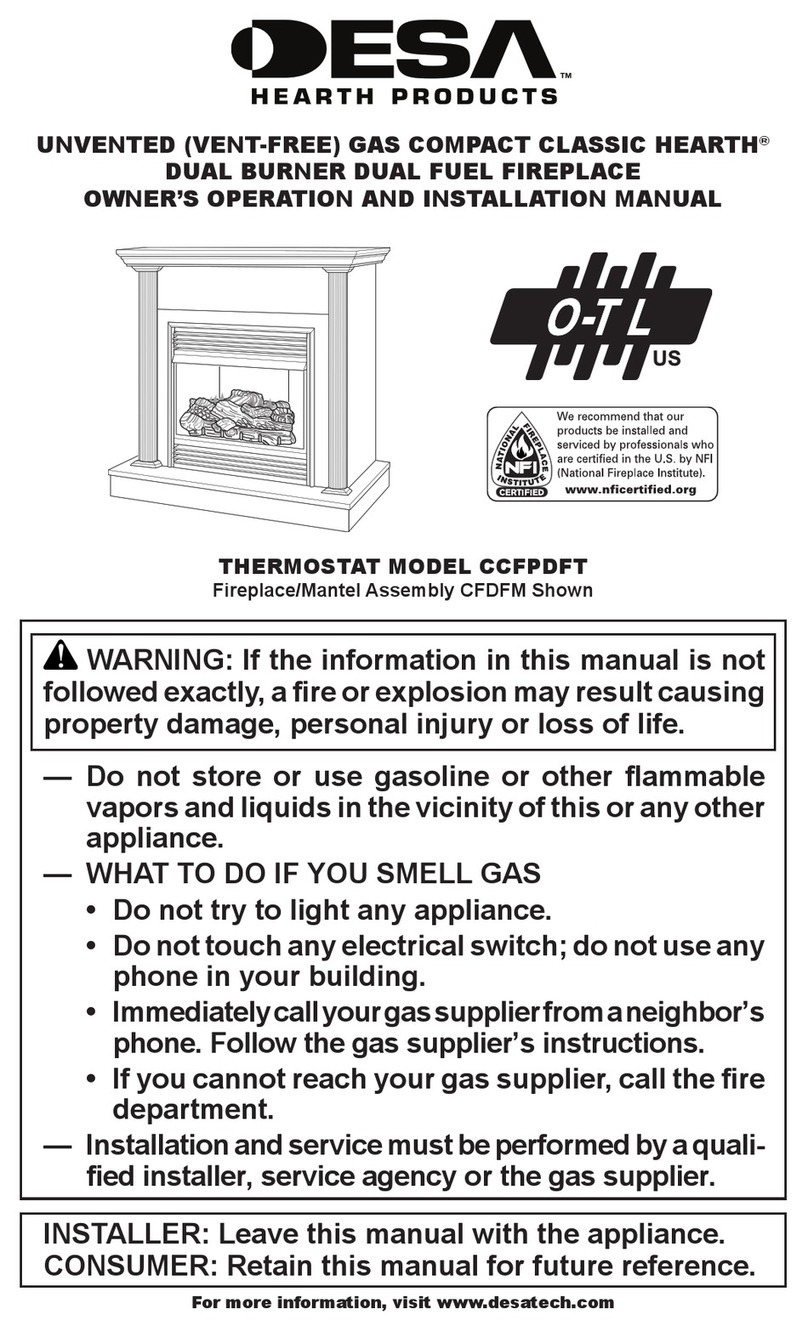
5
3
OPERATION GUIDELINES
When a AK4 combustion air assembly and a combustion air duct are attached to the connecting point on the
left or right side of the fireplace, combustion air may enter the firebox through a dampered opening behind the
left or right side brick. This feature is designed for your benefit to reduce the room air used for combustion and
to prevent excessive loss of heat from the room. When the fireplace is in use, this damper should be open.
Whenthe fireplace is not in use, the damper should be closed to preventcold air from entering thefirebox. The
combustionair damper is openwhen the lever,locatedon the leftand right side ofthe firebox near thetop of the
firebrick, is up and closed when the lever is down.
Outside air for combustion is optional unless required by federal, state or local building codes. See the section
of this manual providing the instructions for installation of the combustion air assembly. The design of the
fireplaceallowsthe routing of thecombustion air duct up,down,or horizontally to obtainthe outside combustion
air. This permits flexibility in planning your installation. See Figure 22 for typical installation methods. Review
theprecautions and recommendationsin this manual pertaining to outside combustion airinstallation.
Glassdoorsshouldbeinstalledtoreceivethemaximumbenefitfromyourfireplace. Forlargefires, the maximum
heating benefit from the fireplace will be obtained with the doors open due to the high amount of radiant heat
being emitted out of the front opening of the fireplace. With a small fire, or before retiring in the evenings, it is
best to operate the fireplace with the doors closed to prevent excessive room air form being drawn up the
chimney. When the doors are open, the mesh screens should be closed to help keep burning embers from
poppingout of the firebox.
The fireplace also is equipped with a flue damper, which must be open when the fireplace is in use. The flue
dampercontrolleveris located inside the fireplace. The counterweighteddamperisoperated by simply pushing
up to open or pulling down to close the damper. When the fireplace is not in use, the damper should be closed
to prevent cold air form entering the chimney as well as preventing warm air in the room from escaping up the
chimney.
NOTE: It is normal for a small amount of smoke to be released from the upper portion of the fireplace the first
few times you use your new fireplace. This results from an oil residue on the metal. Open a door or window
to allow the smoke to escape.
Thegrate included with thisfireplace helps to appropriatelylocate and contain theburning wood. Failure touse
thisgrate may cause overheating ofparts of the fireplace and allow large pieces of burning wood toroll forward
out of the firebox. If the grate becomes warped or damaged, it must be replaced with grate number 072954
only.
WARNING: Fireplaces equipped with doors should be operated only with the doors fully open or doors fully
closed. If doors are left partly open, gas and flame may be drawn out of the fireplace opening, creating risks of
both fire and smoke.
Allfireplace chimneys are indirect contact withcold air on theexterior of thestructure. Consequently,whenthe
fireplaceisnotinuse,coldaircanfalldownthechimneyofthefireplacetocooloffthefireplacechase. Therefore,
thefireplacechase must be insulatedtominimize the risk ofcoldair infiltration to thehome. Even if the fireplace
chase is adequately insulated, this cannot completely ensure that cold air infiltration into the structure will be
eliminated. Cold air infiltration is a possibility with any fireplace or device that freely communicates with the air
on the outside of the structure. Today’s homes are more energy-efficient and, therefore, better insulated and
tightlyconstructed. Unfortunately,whenairisremoved from the house, asbyabathroom fan, or consumed bya
furnace, additional air is needed to replace the air consumed. Unless the additional air is supplied, this can
causeanegativepressure in the home. When thishappens,the house will draw inoutsideair form the cracks in
the windows, down the fireplace flue or other locations of air leakage in the home. Because cold air infiltration
maybeunavoidablein some structures, MartinHearth& Heating is not responsibleforheat loss or air infiltration
through or around the fireplace.
53D9027. Rev 1 03/03
